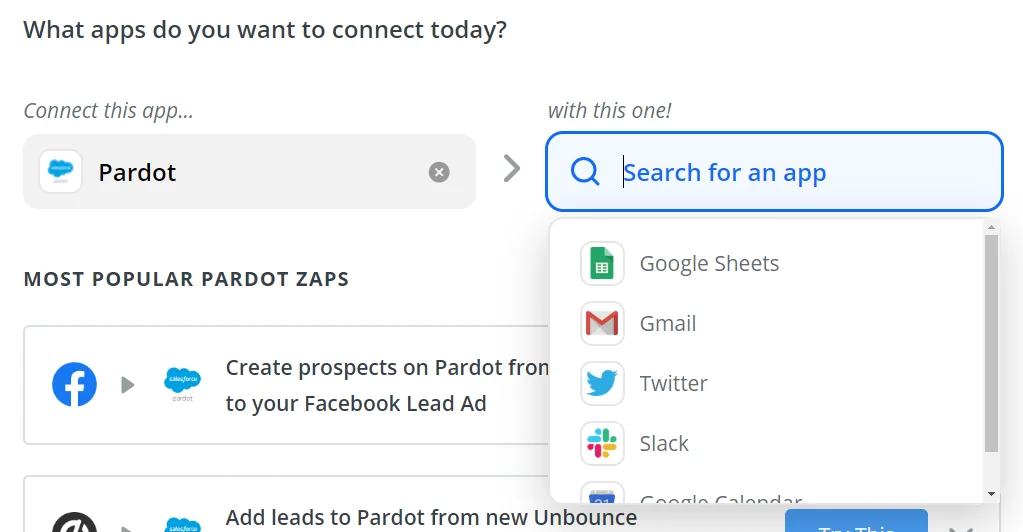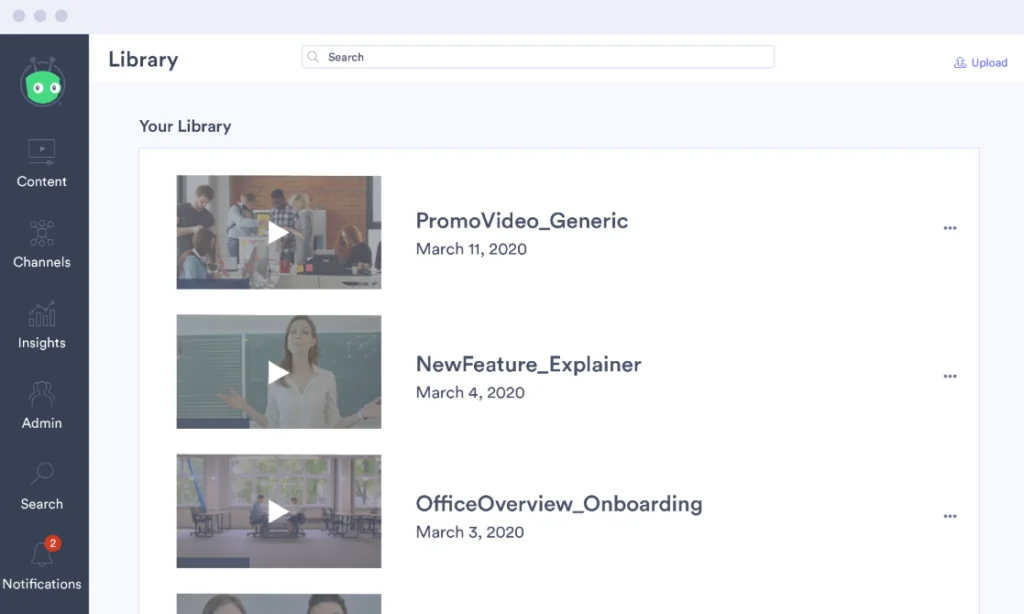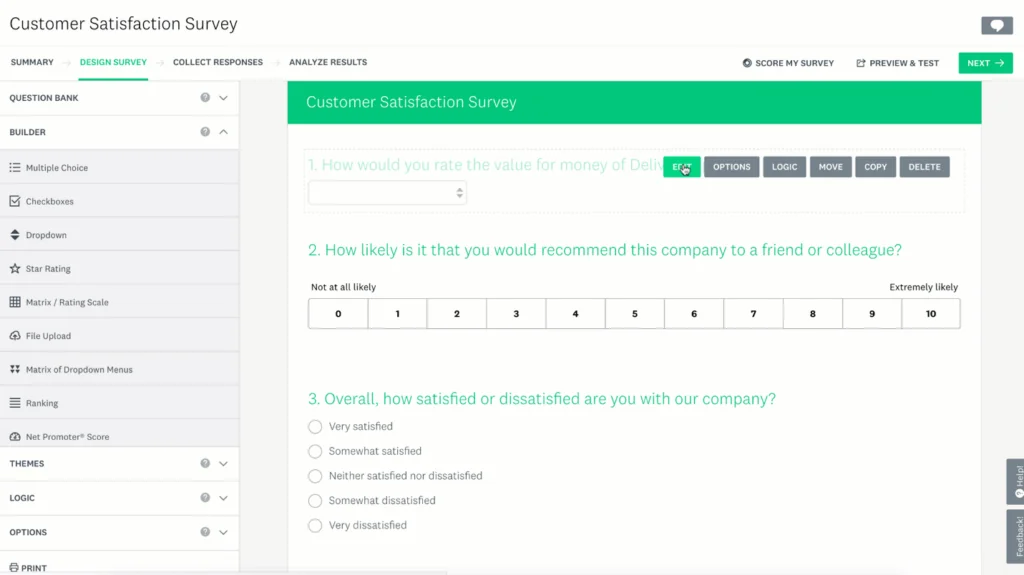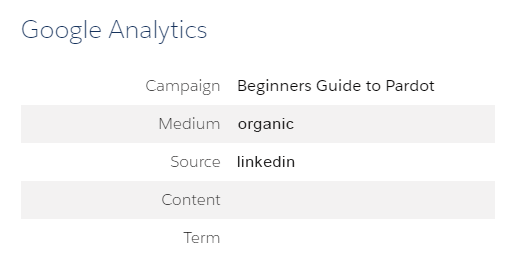If you’re using Pardot by Salesforce, you have a powerful email marketing automation tool at your fingertips. In this article, we’ll explore some of the best integrations that’ll help you unlock even more functionality from the platform.
Whether you’re just getting started with technology like webinars and chatbots, or simply looking for better tools to integrate with Pardot, these platforms will take your marketing tech stack to the next level.
We’ve helped many marketing teams integrate tools like these into their Pardot automation stacks. These recommendations come from our first-hand experience of their ability to increase engagement and create unforgettable brand interactions.
We’ll start with one of the most versatile integrations you can add to your marketing stack.
1. Zapier: Integrate Pardot with 2,000 apps.
Zapier is one of the most robust, marketing-friendly tools out there. It allows for quick API connections to Pardot and other marketing automation platforms. It’s quickly become digital marketers’ favorite tool to automate complex tasks and simplify their workflows.

Why use Zapier?
When integrated with Pardot, Zapier allows you to create and update data automatically from a variety of sources. You can create custom automated workflows called Zaps by triggering events in Pardot when an action is taken in another platform.
With Zapier, it’s much easier to work with multiple marketing tools at once because you don’t have to worry about syncing data manually or the user errors that come with that. Zapier can even add additional functionality to the default Pardot connectors you may already have set up.
How to integrate Zapier with Pardot
To first connect Pardot with Zapier, you just need to enter your Pardot API key, which can be found on the account’s setting page in Pardot.
Zapier then allows you to integrate over 2,000 popular apps with Pardot (some of which made our list below). The steps to integrate a new app through Pardot are simple:

- Pick the app that will act as a trigger and kick off the automation.
- Choose a resulting action that will take place in the other app.
- Select the data that will be sent from one app to the other.
Pardot + Zapier use case
One example of how we’ve used Zapier with Pardot is by funneling leads from LinkedIn’s native lead gen forms to our Pardot database. The LinkedIn form allows users to submit their information for a content download directly on the networking site, which increases the likelihood of form completion. With Zapier, we’re able to send those leads directly to our marketing platform so we can nurture them further.
2. Unbounce: Create custom landing pages.
Unbounce is a popular platform for creating custom landing pages with an intuitive drag-and-drop page builder. The platform offers tons of features for customizing and optimizing your landing pages, as well as the ability to create promotional pop-ups and header bars.

Why use Unbounce?
Unbounce makes it simple to create stylish high-converting landing pages compared to using Pardot landing pages or designing one from scratch. You can easily add an Unbounce landing page to a WordPress site through their plugin.
Unbounce takes dynamic content a step further, offering their Dynamic Text Replace (DTR) feature, which replaces header text with your visitor’s actual search team.
The platform also offers analytics, A/B testing, and accelerated mobile page (AMP) features to help you optimize your pages. Additionally, you get access to plenty of customization features, like free stock photos from Unsplash and over 240 landing page templates from Themeforest.
How to integrate Unbounce with Pardot
You can connect your Unbounce landing pages to Pardot through a Zapier integration. As mentioned earlier, all you need to do is choose the trigger that sets off the automation and the action that will be automated.
For the Unbounce-Pardot integration, your choice of trigger is basically limited to a new Unbounce landing page form submission.

Pardot + Unbounce use case
When a website visitor submits a specific Unbounce landing page form, you can add the new prospect to a list in Pardot. Then, you can enroll them in personalized Pardot email programs that are relevant to the landing page they converted from.
3. Qualified: Convert prospects with an
AI-powered chatbot.
Qualified is an automated chatbot that converts your website visitors to prospects through “conversational marketing.” It uses artificial intelligence to converse with website visitors, capture prospect information, and even qualify leads automatically.

Why use Qualified?
Qualified lets you set up your own conversational logic so the bot can ask the right qualification questions at the right time and even send visitors relevant content. The chatbot can automatically set meetings with your sales team for qualified leads and funnel not-yet-qualified leads into Pardot for more nurturing.
According to Salesforce, companies that add Qualified for Pardot to their marketing and sales stack have seen a 24% increase in qualified leads and a 62% increase in sales pipeline.
The good thing about using a chatbot is that you’re putting the important website chat task into the hands of AI instead of always needing an agent on-call to answer visitor inquiries. Qualified is a bit more affordable and intuitive than other chatbot platforms out there. And it was built natively on the Salesforce platform, which makes for a smooth integration with Pardot.
How to integrate Qualified with Pardot
Qualified for Pardot is a “connected app,” which means it must be integrated through a specific Pardot user profile. Whichever user you connect it to needs to have Administrator credentials in Pardot. If you don’t want to connect through a specific user, Qualified suggests creating a special Pardot user (i.e. qualified-user@yourcompany.com).
You can set up the integration on the Qualified platform by navigating to Integrations under Admin Settings, then simply enter the Pardot user’s email, password, and API key.

Pardot + Qualified use case
When prospects return to your website, Qualified can use their Pardot information to personalize the chat. The chatbot can welcome them back by name and ask relevant questions about their company, which then helps fill out more details about target accounts.
4. Vidyard: Engage & qualify prospects via video content.
Vidyard is a powerful video content platform with tools for video hosting, live streaming, and embedding videos on your website. The platform offers a host of additional features like video analytics and SEO tools.

Why use Vidyard?
When Vidyard is integrated with Pardot, it supplies all sorts of useful information about how prospects are interacting with your video content. You can see a prospect’s number of videos watched, their most recent video they viewed, and even the total second duration they spent watching your content.
How to integrate Vidyard with Pardot
The Vidyard integration process is similar to the process we discussed for Qualified. Vidyard allows you to set up the Pardot integration under Integrations by entering the Pardot API key and the login credentials of an administrator account.
The integration will create custom fields in Pardot for the video metrics mentioned above. You can also sync known viewers from Vidyard into Pardot as prospects by entering the campaign ID for your Vidyard integration.

Pardot + Vidyard use case
One way you can take full advantage of this integration is by adjusting a Pardot prospect’s score based on how much video content they’ve watched. You can also segment prospects who have binged many of your videos into a special list and send them additional video content they might be interested in.
5. GoToWebinar: Host digital events & generate leads.
GoToWebinar is one of the leading webinar platforms that offers a suite of tools, including event management features, analytics, and engaging video features like live polls.

Why use GoToWebinar?
GoToWebinar is our top recommendation for anyone getting started with a webinar strategy. You can easily set up your webinar registration with Pardot landing pages and forms, and send those event registrants straight to Pardot as prospects.
How to integrate GoToWebinar with Pardot
GoToWebinar is a default Pardot connector, which makes setting up this integration relatively simple. You can set it up in the Pardot platform under Admin > Connectors.
Then, just enter the GoToWebinar username of the organizer for your webinar(s) and select a Pardot campaign to attach to the connector. You will also need to log into GoToWebinar to grant access to Pardot.

Pardot + GoToWebinar use case
Create separate Pardot lists for GoToWebinar registrants who attended the webinar, left early, or didn’t attend at all. Then, you can send personalized follow-up emails to eventually get those colder prospects to engage with your content.
6. SurveyMonkey: Collect feedback directly from buyers.
SurveyMonkey is probably the most popular online survey tool, allowing organizations to collect important feedback from prospects and customers.

Why use SurveyMonkey?
SurveyMonkey is a go-to online survey platform that offers an intuitive interface for setting up and sending out your surveys.
Surveying your prospects lets you learn more about their interest in your content and offerings, as well as their buying intent. On the other hand, sending surveys to your existing customers allows you to improve your business based on real feedback and potentially grow customer accounts.
How to integrate SurveyMonkey with Pardot
SurveyMonkey is another tool that can be connected with Pardot through Zapier.
Choose the triggers and actions you’d like to automate through Zapier, which include creating new prospects, updating existing prospects, and adding prospects to lists.

Pardot + SurveyMonkey use case
Pro or Ultimate Pardot users with custom object functionality can use surveys to gather further information about your prospects and attach it to their profiles in Pardot. For example, you could ask them to select which of your products or services they’re interested in, and then send them relevant emails promoting those offerings.
7. Email On Acid: Create HTML emails for every browser.
Email On Acid is an email preview and testing tool that allows you to accurately proof your HTML emails in a variety of operating systems, browsers, devices, and email clients.

Why use Email on Acid?
This email testing tool is not only an affordable option with an easy setup, but is also highly accurate. With Email On Acid, you can preview your emails in 8 different operating systems, 6 web browsers, and 32 email clients.
For anyone who’s ever had trouble making their HTML emails look good in every email client or browser, this tool is a game changer.
How to use Email on Acid with Pardot
There are 2 ways to test your Pardot emails with an Email On Acid account. The manual way is to copy and paste the email HTML into the testing platform. Alternatively, you can send a test email directly from Pardot to a special email address provided in your Email On Acid account.

Email On Acid prefers the second method, the auto-process test, because platforms like Pardot sometimes add small pieces of code to your emails that can affect the layout. By sending an actual test email, you ensure you’re seeing a real preview of your email.
Pardot + Email On Acid use case
You can use Email On Acid to identify individual lines of code causing problems in your emails, and even see which parts of your code are not compatible in certain email clients.
8. Sender Score: Monitor your email sender reputation.
Sender Score is a Salesforce-recommended tool for evaluating your sender reputation, which affects the deliverability of your Pardot emails.

Why use Sender Score?
Sender Score is the standard for email reputation tools, and it’s easy to use. It gives you insight into how ISPs and network admins collect information about emails to prevent spam.
It also offers tips to improve your sender reputation, detailed reputation reports, and other free tools to keep your emails from landing in prospects’ spam folders.
How to use Sender Score with Pardot
Sender Score is not so much an integration with Pardot, since it’s more focused on the IP address from which you send your Pardot emails. To get started, just navigate to Sender Score’s form and enter your IP address and other required information about yourself and your organization.
Sender Score + Pardot use case
Use Sender Score to determine how your sender reputation is affecting Pardot email deliverability. According to Salesforce, scores between 90-100 are considered good, 50-80 needs work, and less than 50 points requires some major changes.
If your score is lower than expected, make sure you’re following Pardot’s permission-based policies. You can also make improvements, such as maintaining a consistent sending volume and warming up your IP address.
9. Google Analytics: Get insight into how prospects find you.
Google Analytics is one of the most well-known and widely used web analytics tools for tracking and reporting on your website traffic.

Why use Google Analytics?
It’s safe to assume that most marketers reading this probably already use Google Analytics. It’s something every marketing team should use to obtain all sorts of metrics about website traffic and visitor behavior straight from Google itself.
When connected with Pardot, Google Analytics provides tons of extra information about the source of your prospects. You can see which websites are sending prospects to your site, as well as the search terms users enter before finding your site in organic search.
How to integrate Google Analytics with Pardot
Google Analytics is a default connector for Pardot. To set it up, navigate to Admin > Connectors in Pardot and create the Google Analytics connector.
In order to collect information about where your Pardot prospects originally come from, you must include UTM parameters in any inbound links you’re using (in emails, on social media, ads, etc.). UTM parameters are extra code at the end of a URL that tell Google Analytics which medium, source, campaign, content, and search term visitors used to land on your site.
UTM parameters look like this:
https://ebq.com/beginners-guide-to-pardot/?utm_medium=email&utm_source=engagement_studio&utm_campaign=beg_guide_pardot_post
And when Google Analytics is connected to Pardot, UTM parameters give you prospect information like this:

Pardot + Google Analytics use case
We use Google Analytics and Pardot to track our conversion goals.
You’ll need to include your Google Analytics tracking code on all of your Pardot assets, such as landing pages and forms, if you want to track visitors’ complete journey from clicking an inbound link to converting to prospect.

10. Salesforce: Align your marketing & sales strategies.
Salesforce is the world’s most popular customer relationship management (CRM) platform, and there’s a good chance you are already using it if you’re using Pardot!

Why use Salesforce?
The benefits of using Salesforce as a CRM are obvious: it’s an extremely robust, highly customizable platform that helps you track all prospect and customer interactions. It also helps your sales team sell better and keeps all performance metrics in one central location.
When Pardot and Salesforce are paired together, your entire company gets visibility into the complete customer journey. You can align your marketing and sales teams by ensuring they have the same view of every prospect.
How to integrate Salesforce with Pardot
To integrate the 2 platforms, you first need to install the Pardot AppExchange Application within Salesforce and then setup the Salesforce connector within Pardot. Once the connector is activated, you can map your Pardot and Salesforce fields to each other so that all prospect information is synced properly.
Here are some additional resources for integrating Pardot and Salesforce:
Pardot + Salesforce use case
Integrating Salesforce and Pardot helps you accurately attribute where leads, and eventually customers, come from. You can see which marketing campaigns are contributing the most to pipeline growth and revenue directly in your Salesforce dashboard.

Better Pardot marketing automation tools
= better marketing
Pardot integrations allow you to get far more value out of your investment in the marketing automation platform. While Pardot’s out-of-the-box features are top-notch on their own, the integrations mentioned here will help you take your marketing even further.
If you’re interested in more recommendations on integrations, or just general Pardot guidance, our Pardot certified consultants have the experience and expertise you need. Visit our Pardot page to learn how we can make the platform work for you.


